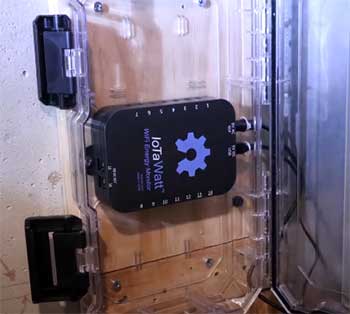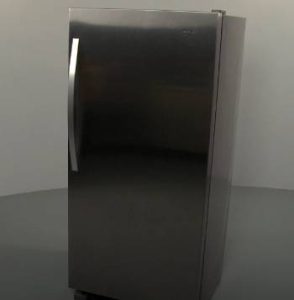In today’s technologically advanced world, it’s all about intelligent energy management. Energy monitors like IoTaWatt and Sense are leading the charge in this space. Both are excellent choices, but they offer different features and benefits.
Let’s compare the two to see which might be best for you.
A Brief Comparison Table
| Feature | IoTaWatt | Sense |
| Approach | Open-source, DIY-style energy monitoring | AI-driven, automated energy monitoring |
| User Experience | Technical, requires understanding of data | User-friendly, easy to understand |
| Customization | High, due to open-source nature | Limited, due to automated nature |
| Compatibility | Can be customized for integrations, but not inherently | Supports integration with other smart devices |
| Cost | Generally less expensive | Generally more expensive |
| Community Support | Strong, due to open-source community | Limited |
| AI Learning | No | Yes |
| Transparency | High, provides all data to users | Lower, uses proprietary algorithms |
| Setup Difficulty | Higher, may require technical expertise | Lower, more plug-and-play |
IoTaWatt: An In-Depth Look
IoTaWatt is an open-source energy monitor with a strong emphasis on transparency and adaptability. It measures real-time electricity usage and provides detailed statistics about your power consumption.

Pros of IoTaWatt
- Flexibility and Customization: IoTaWatt’s open-source nature allows for a high level of customization. Users with technical knowledge can modify its code to fit their specific needs.
- Transparency: Every piece of data collected by IoTaWatt is accessible to the user. There are no hidden metrics or complex algorithms that you can’t understand.
- Community Support: Being an open-source project, IoTaWatt has a passionate community around it. Users can share tips, tricks, and solutions to common problems.
Cons of IoTaWatt
- Technical Complexity: Because it’s open-source and customizable, IoTaWatt may be overwhelming for those without a technical background.
- Lacks AI Learning Capabilities: Unlike Sense, IoTaWatt doesn’t learn from your usage patterns to provide tailored insights and recommendations.
Sense Energy Monitor: An Analytical Review
Sense offers a more hands-off approach to energy monitoring, harnessing the power of machine learning to provide intuitive and personalized insights.
Pros of Sense Energy Monitor
- Smart Home Integration: Sense can seamlessly integrate with other smart home devices, which is a big plus for those invested in home automation.
- AI-Driven Insights: Sense’s machine learning capabilities allow it to learn your usage patterns and provide helpful insights and predictions.
- Easy Setup and Usage: Sense is designed to be user-friendly. Its intuitive app presents data in a clear, easily understandable format.
Cons of Sense Energy Monitor
- Limited Customization: Unlike IoTaWatt, Sense doesn’t allow much room for customization. Its ease of use comes at the expense of flexibility.
- Cost: Sense is generally more expensive than IoTaWatt, which might be a consideration for those on a budget.
Key Differences Between IoTaWatt and Sense Energy Monitors
Although IoTaWatt and Sense share a common purpose of monitoring energy usage, they’re differentiated by some distinct characteristics that set them apart.
- Approach to Energy Monitoring

The most significant difference between IoTaWatt and Sense lies in their approach to energy monitoring.
IoTaWatt is an open-source energy monitor, emphasizing flexibility and customization.
This openness allows tech-savvy users to modify and tinker with its functionalities to best suit their needs.
On the other hand, Sense offers a more sophisticated, AI-driven approach.
It learns from your energy usage patterns, providing personalized insights and predictions. Its machine learning capabilities make it a smart, intuitive option for those less inclined to dig into technicalities.
- User Interface and Experience
Another key distinction is the user interface and experience offered by each monitor.
IoTaWatt is more technically inclined, catering to users who prefer a hands-on approach. Its interface provides a wealth of data, which can be overwhelming if you’re not accustomed to managing and interpreting such information.
Contrarily, Sense is designed to be user-friendly, even for those without technical backgrounds. Its intuitive app visualizes your energy consumption in a clear and easily understandable format.
- Integration and Compatibility
In terms of compatibility, Sense stands out with its ability to seamlessly integrate with other smart home devices. This feature enhances your smart home experience, allowing the monitor to function in harmony with other devices.
In contrast, while IoTaWatt doesn’t inherently support such integrations, its open-source nature means you can develop custom integrations if you have the necessary technical expertise.
- Cost
Finally, cost is another area where these two devices differ. Generally, Sense is more expensive than IoTaWatt. Therefore, budget considerations may play a role in your decision between the two.
Also Read: Differences Between Electric and Oil Water Heaters.
Frequently Asked Questions (FAQ)
Wiser Energy System is a product by Schneider Electric that includes the Sense energy monitor. So, while they’re part of the same offering, they’re not the same. Sense is the technology that powers the Wiser Energy System’s monitoring capabilities.
IoTaWatt is an open-source energy monitor that measures your home’s electricity usage in real-time. It’s known for its transparency, customization options, and strong community support.
If you have a solar power system, Sense Solar is absolutely worth considering. It provides detailed insights into your solar production and home energy usage, helping you maximize your investment in solar energy.
Sense is quite accurate, thanks to its machine learning capabilities. Over time, it becomes more precise as it learns more about your energy usage patterns. However, it may occasionally misidentify devices, which can be corrected manually through the Sense app.
Conclusion
Choosing between IoTaWatt and Sense comes down to your specific needs and preferences. Both are top-of-the-line energy monitors that offer their unique pros and cons.
Whichever you choose, you’ll be taking a big step towards smarter, more efficient energy usage in your home.



